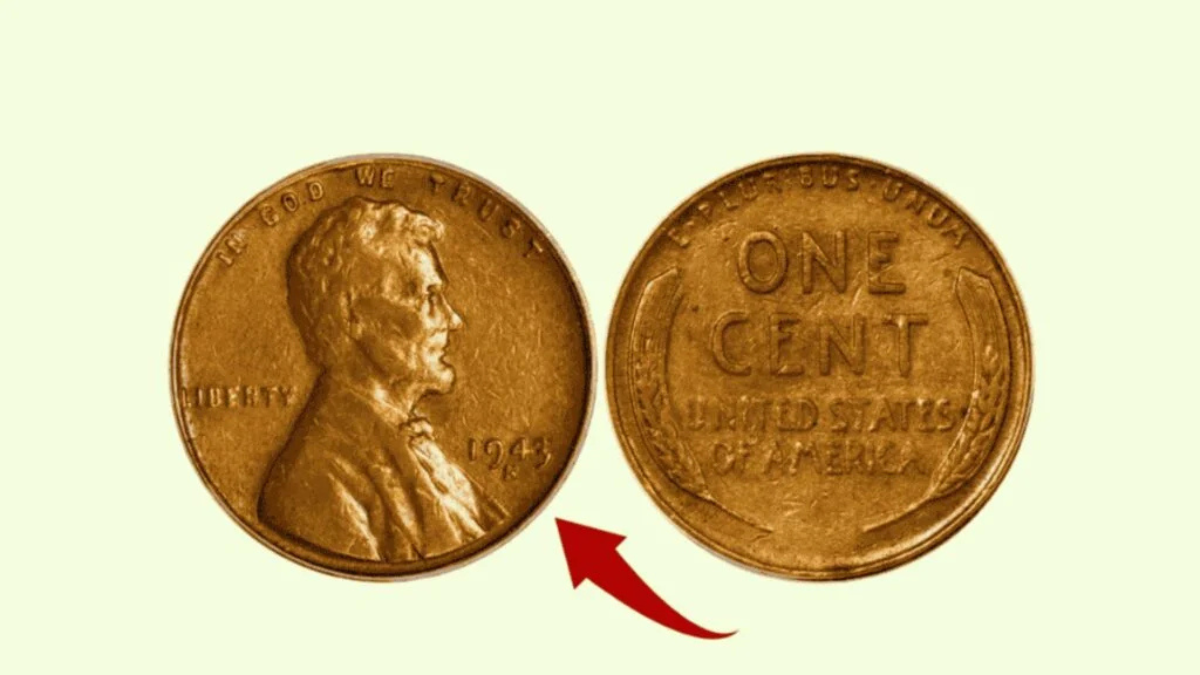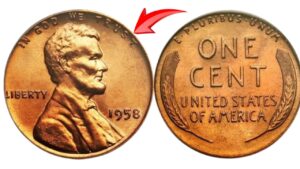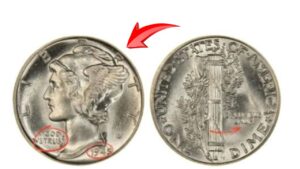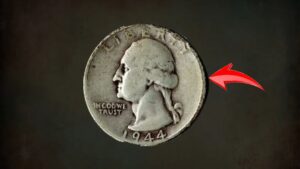Every now and then, someone unknowingly spends a coin worth thousands of dollars — just because they didn’t know what to look for. Rare coins can still slip through everyday circulation, especially if they resemble standard pocket change. Whether you’re a casual spender or a coin collector in the making, knowing which coins to watch out for could turn spare change into a serious windfall.
Here are 8 rare coins that are still found in circulation and could be worth hundreds or even thousands of dollars.
1. 1943 Bronze Lincoln Penny
During World War II, the U.S. Mint switched from copper to zinc-coated steel for pennies to save copper for the war effort. But a few bronze (copper) planchets were mistakenly struck in 1943.
- Value: $100,000 to $250,000+
- Key Identifier: Copper color (instead of silver-gray), sticks to a magnet = fake
2. 1955 Doubled Die Lincoln Cent
This penny is famous for its doubled inscriptions caused by a misalignment during the minting process.
- Value: $1,000 to $15,000+
- Key Identifier: Clearly doubled “LIBERTY” and date, especially the 5s in 1955
3. 1969-S Doubled Die Obverse Lincoln Cent
Often confused with machine doubling, this coin features dramatic doubling on the obverse (front), especially visible on “LIBERTY” and “IN GOD WE TRUST.”
- Value: $10,000 to $50,000
- Key Identifier: Sharp, clear doubling—not blurry or shadowed
4. 1982 No Mint Mark Roosevelt Dime
While dimes from Philadelphia usually carry no mint mark, a small number of 1982 Roosevelt dimes without a “P” were mistakenly released.
- Value: $200 to $2,000
- Key Identifier: No “P” mint mark to the right of the date
5. 2004-D Wisconsin Extra Leaf Quarter
This error coin from the 50 State Quarters program has an extra leaf on the left side of the corn, with “high” and “low” varieties.
- Value: $100 to $1,500
- Key Identifier: Look for an extra leaf near the corn stalk
6. 1970-S Small Date Lincoln Cent (Doubled Die)
This penny is rare due to its small date and subtle doubling—most notably seen in “LIBERTY” and “IN GOD WE TRUST.”
- Value: $500 to $3,000
- Key Identifier: The top of the “7” in “1970” is level with the rest of the date
7. 1992 Close AM Lincoln Cent
Normally, there’s a noticeable space between the “A” and “M” in “AMERICA” on the reverse. This rare variant shows the letters nearly touching.
- Value: $1,000 to $25,000
- Key Identifier: “A” and “M” in “AMERICA” are very close together
8. 1999 Wide AM Lincoln Cent
In contrast to the 1992 Close AM, the 1999 Wide AM is an accidental use of the proof reverse on a business strike coin.
- Value: $250 to $1,000
- Key Identifier: Extra space between the “A” and “M” in “AMERICA”
Quick Reference Table
| Coin | Year | Key Error/Feature | Est. Value |
|---|---|---|---|
| 1943 Bronze Lincoln Cent | 1943 | Bronze composition | $100,000+ |
| 1955 Doubled Die Penny | 1955 | Doubled lettering | $1,000 – $15,000 |
| 1969-S Doubled Die Penny | 1969 | Strong doubling | $10,000 – $50,000 |
| 1982 No Mint Mark Dime | 1982 | Missing “P” mint mark | $200 – $2,000 |
| 2004-D Wisconsin Quarter | 2004 | Extra leaf on corn | $100 – $1,500 |
| 1970-S Small Date Penny | 1970 | Small date, slight doubling | $500 – $3,000 |
| 1992 Close AM Penny | 1992 | AM letters nearly touching | $1,000 – $25,000 |
| 1999 Wide AM Penny | 1999 | AM letters spaced apart | $250 – $1,000 |
These coins prove that treasures can still be found in your pocket change, vending machine returns, or even your old piggy bank. If you come across one of these by chance, it’s worth having it authenticated before spending it—or tossing it in the coin jar. Keep an eye out; the next rare coin might be closer than you think.
FAQs:
How can I tell if my coin is rare or valuable?
Look for key markers such as mint errors, unusual dates, and design anomalies. Using a magnifying glass and comparing your coin to verified images online can help.
Should I clean a rare coin before selling it?
No. Cleaning can damage the coin’s surface and reduce its value significantly.
Where can I get a rare coin appraised?
Contact a reputable coin dealer, local coin shop, or send it to a professional grading service like PCGS or NGC.



